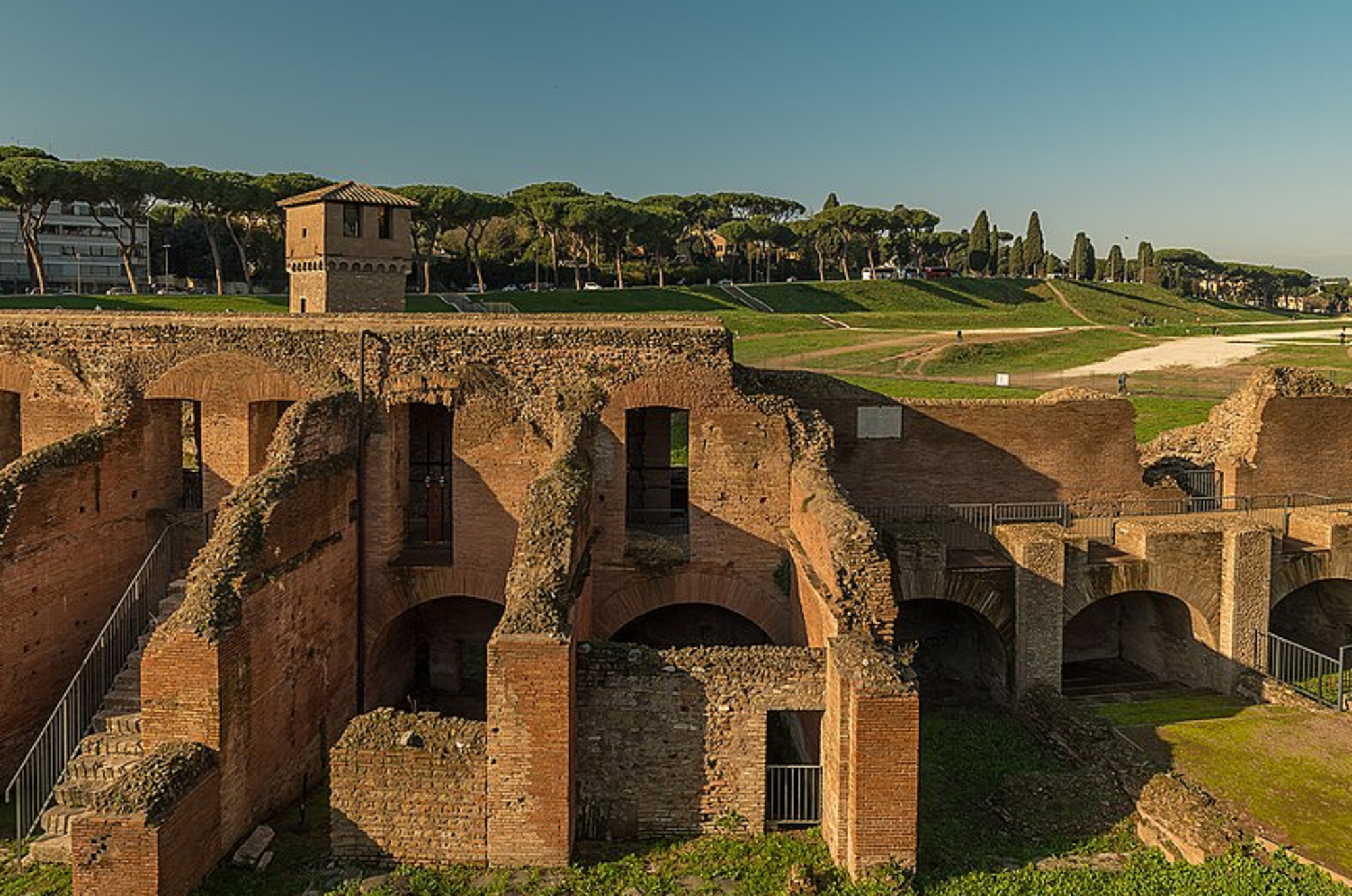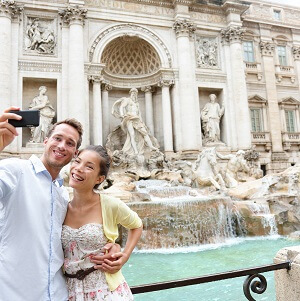Hundreds of years before the Colosseum was even thought of, it was the much larger Circus Maximus that provided Romans with their epic chariot races and gladiatorial battles!
Often called the Colosseum’s big brother, the Circus Maximus was a goliath of a hippodrome that housed spectacular events and could seat almost a quarter of Rome’s population. It may be less thought of when the chariot races and gladiatorial displays of Rome are discussed but the stadium has a rich and fascinating history.
The history of Circus Maximus
Nestled between the Aventine and Palatine Hills, Circus Maximus was built around the 6th-century BC by order of Lucius Tarquinius Priscus and is the oldest and largest of Rome’s public spaces. The stadium was built on the supposed site of the Rape of the Sabine Women. The story goes that during the formation of Rome, the followers of Romulus were mainly men and they needed women to increase their population. Following failed talks with the Sabines, Romulus staged chariot races to distract the Sabine men whilst the Romans stole their women. What better place to construct a chariot racing venue than here?
What was the Circus Maximus used for?
The Circus Maximus was used to stage chariot races, gladiatorial displays, animal hunts and fights, and the Ludi Romani – the Roman Games. The latter was sponsored by rich and powerful Romans to honour the gods or to celebrate a victory in battle. Some Ludi only lasted for a day while others lasted for multiple days and could feature chariot races, feasts, and other ceremonies.
One thing that the Romans are famous for is their love of violent entertainment. At the Circus Maximus, many gladiators met their deaths during epic battles and some people were brought there to be publicly executed. They also included animals in the brutality. Wild beast hunts were arranged for the public and the military leader, Pompey, even ordered a contest between barbarian gladiators and 20 elephants!
The most famous events held in the Circus Maximus were the chariot races. The chariots would have been colour-coded and pulled by anything from 4 to 12 horses. Victorious racers won large cash prizes and enjoyed enormous fame. One of the most famous charioteers was Scorpus, with over 2,000 victories.
What did it look like?
The Circus Maximus was colossal in size, featuring stone walls that surrounded a racing track that was over 500metres long. The track itself would have been covered in sand with starting gates at one end ready to release their competitors into the stadium. Down the centre of the track was a low wall around which the chariots and their horses would charge. The low wall also displayed a towering obelisk, transported from Egypt at great expense by Augustus to enforce the Roman Empire’s superiority.
In the middle of the seating, along one side of the track, was the pulvinar. This pillared temple was a viewing platform for the ruler or Emperor. Here, they could watch the games while sitting amongst the gods, with all the spectators able to see them as well as the entertainment.
Over the years, several Roman rulers and Emperors developed the stadium. The first Etruscan king created seating for the rich and famous and his grandson built more seating for the commoners. It was Julius Caesar who oversaw the biggest expansion of seating, ordering that it extend around the whole of the track. A fire later destroyed much of this seating, but it was rebuilt over the years.
An arcade that contained shops and workshops surrounded the circus and these served the thousands of spectators that visited the stadium. Many of the fires that swept throughout the Circus may have begun in these arcades. One of the blazes was reported to have originated from a basket weaver’s workshop.
The Circus Maximus vs the Colosseum
Though the Colosseum is better known, it is by far the smaller venue. The Circus Maximus measured 621m by 118m whereas the Colosseum measured 189m by 156m. Historians have estimated that Circus could hold around 250,000 spectators whereas the Colosseum only had space for around 50,000. Whereas the Colosseum was built with 360-degree seating, the Circus’s seating varied over the years, with various rulers adding additional bleachers for different groups of society.
The two stadiums staged much of the same entertainment, however, the Colosseum could hold recreations of naval battles by flooding the stadium floor. The only flooding that the Circus could stage was unintentional, with the stream that used to run through the valley occasionally overflowing into the stadium.
Why build the Colosseum?
With the Circus Maximus being so large and so popular, why build another smaller venue?
Before the construction of the Colosseum between 70-80 AD, Rome was in unrest after the assassination of Emperor Nero. The new Emperor Vespasian wanted to reinstate stability, and he knew that a way to do this was to keep the citizens happy…and entertained. He ordered the construction of the new stadium, then called the Flavian Ampitheatre, and it became the new popular place for Roman entertainment. The Colosseum was spectacularly built and though it only housed 50,000 spectators, it staged gladiatorial battles, executions, and battle recreations in grand fashion. The Circus Maximus wasn’t forgotten after the opening of the Colosseum, but the latter became the prime venue. Roman inhabitants continued to use the circus until the 6th century and they used the Colosseum until the 1300s.
The Circus Maximus today
Today, the foundations of the Circus Maximus are buried under layers of earth and are no longer visible. The circus used to experience regular flooding and so after the stadium fell out of use the floods likely began to bury the site. The high walls that extended around the stadium were slowly dismantled over the years, with the stones taken for other building projects or removed by looters. Nowadays the space is still used for entertainment, holding music events and celebrations. Even the Rolling Stones have played there!
Related article: How Long Did Rome Really Take to Build?
Explore Our Rome Tours
-
Rome Day Tour with Vatican & Colosseum
9 Hours
€95
See More -
Historical Rome Walking Tour
3 Hours
€48
See More -
Afternoon Private Colosseum Tour
3 Hours
€60
See More -
Colosseum & Rome City Tour
9 Hours
€94
See More





